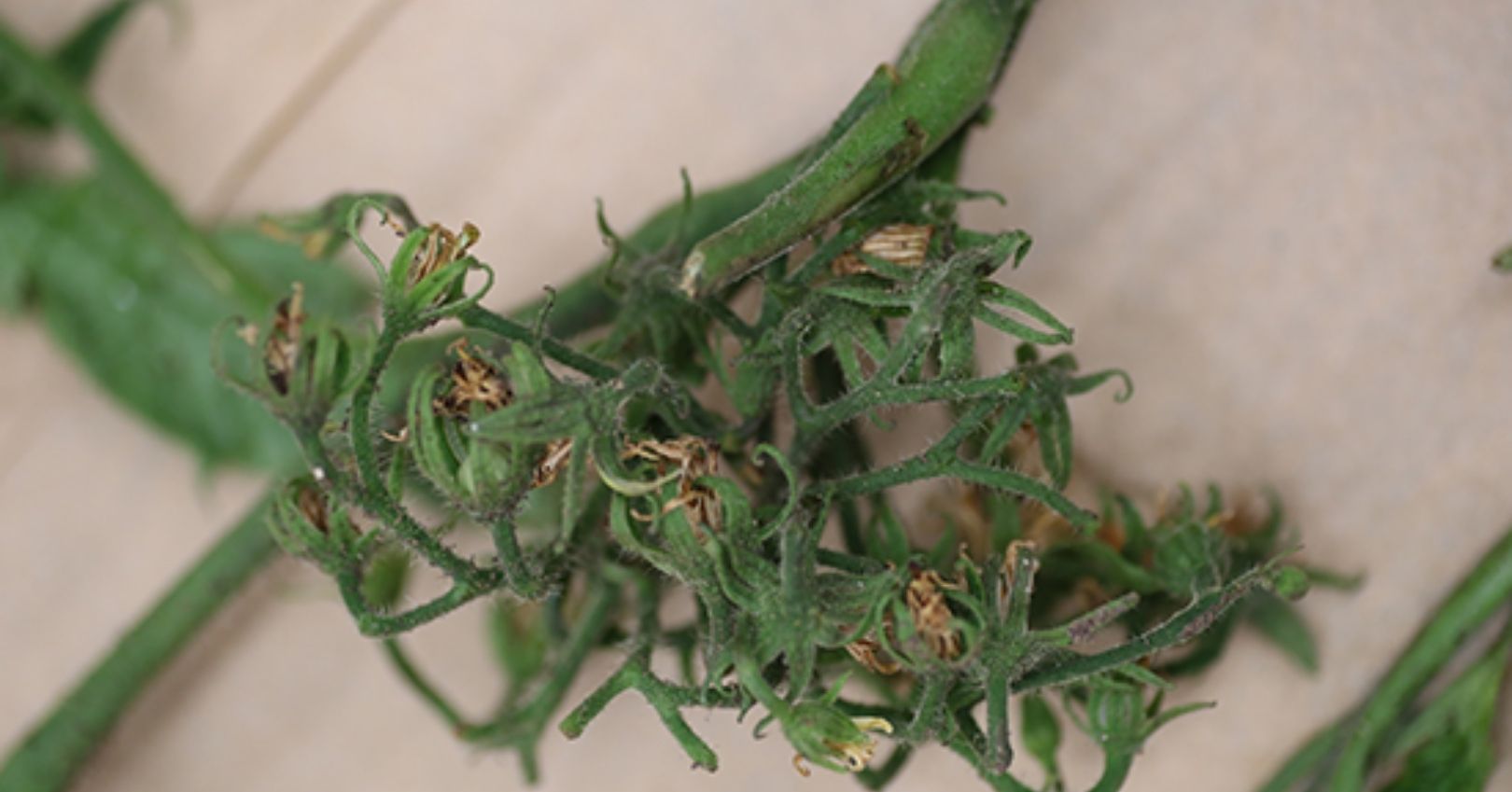Liberibacter

Casual Agent
The bacterium, Candidatus Liberibacter solanacearum (Lso), is primarily known for causing zebra chip on potato, but can also infect pepper, tomato, eggplant, and carrot. Lso was first identified in Utah in 2014 on potato and pepper. In Utah, it is transmitted by the southwest-native insect, potato psyllid (Bactericera cockerelli). The potato psyllid is a small phloem-feeding insect. Adults resemble black winged aphids while nymphs are flattened, cream-colored with red eyes, and usually feed on the undersides of leaves.
Symptoms
The symptoms vary depending on plant age and time of infection. Leaves of plants getting infected early in the season often show vein greening. The leaf veins are darker green than normal. It is combined with interveinal chlorosis. New leaves are also stunted and cupped. Some infected plants produce more flowers than normal but they are often aborted. In addition, the new growth can be stunted and have shortened internodes. Usually no fruit develops after infection. If fruit does develop it is often deformed. Fruit that develops before infection appears to have normal development but is often pale and of low quality.
Disease Cycle
Potato psyllids acquire Lso by feeding on an infected plant. The bacterium can also be passed on from adult females to progeny. Depending on the number of potato psyllids feeding on an individual plant, infection can occur within one to six hours.
Management
It is important to start scouting for potato psyllids using yellow sticky cards early in the season. In addition, inspect the underside of leaves for psyllid nymphs. Once a plant is infected with Lso, there is no cure for it. It should be removed to reduce the amount of inoculum present in the field.
- Avoid planting peppers in an area where potato psyllids have been a problem in the past.
- Apply insecticides. Effective active ingredients include imidacloprid at planting, spinosad, and spiromesifen.

